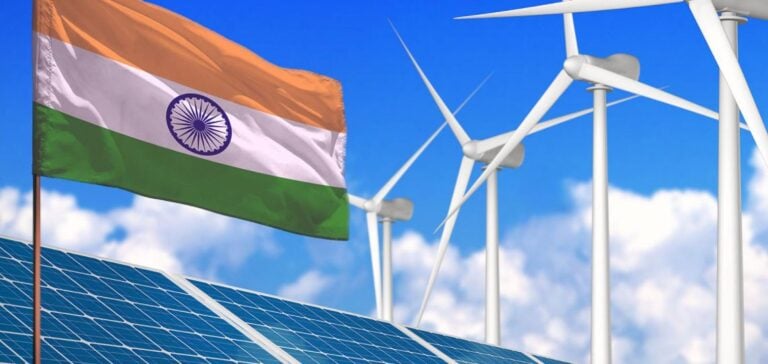India’s installed energy capacity reached 457 gigawatts (GW) in November 2023, according to figures released by the Federal Ministry of Energy. This represents a significant increase from the 249 GW recorded in 2014, demonstrating the country’s ambitions in the energy sector.
Growth driven by renewables
Since 2014, 129 GW of renewable energy, including hydropower, has been added to India’s energy mix. These additions include 91 GW of solar energy and 27 GW of wind energy. These figures underscore the political will to encourage low-carbon energy sources while ensuring national energy security.
However, this transition to renewable energy is accompanied by a persistent reliance on coal. The country has approved 19.2 GW of new coal-fired thermal plants to meet peak consumption needs. Currently, coal and lignite-based thermal capacity represents 217.5 GW, with an additional 29.2 GW under construction and 36.3 GW in the planning stages.
Massive investments in infrastructure
To address the expected increase in demand, which could reach 458 GW by 2032 compared to around 250 GW in 2024, India is making significant investments in its transmission infrastructure. The national grid will expand to 648,000 circuit kilometers (ckm) by 2032, up from the current 491,000 ckm.
Furthermore, interregional transfer capacity will rise to 168 GW, allowing for better integration of the 280 GW of Variable Renewable Energy (VRE) planned by 2030. To date, 42 GW have been completed, 85 GW are under construction, and 75 GW are in the bidding phase.
Untapped potential of pumped storage projects
India has a potential of 181 GW for pumped storage projects (PSP), though only 5 GW have been developed so far. The government aims to add 35 GW by 2032, of which 6 GW are already under construction. These projects are essential for managing fluctuations associated with intermittent renewable energy sources and ensuring a stable supply.
With annual energy demand increasing by 5% to 6%, the government must continue to balance investments between economic growth, energy transition, and political stability.






















